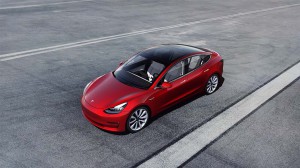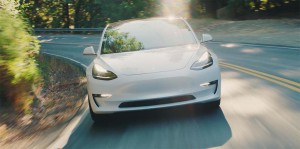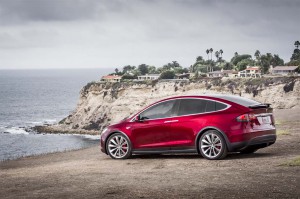
Tesla surprised some Model 3 owners with an over-the-air update that extended the sedan's range by 26 miles to 286 miles.
Thousands of Tesla owners recently discovered a pleasant surprise after hitting the “Start” button on their battery-electric vehicles.
The automaker used its ability to deliver over-the-air updates to extend the range on certain versions of the Model 3 by 26 miles, those sedans now able to travel up to 286 miles on a single charge. At the same time, vehicle performance also was enhanced.
Now, Tesla says, it will be extending the range of the older Models S and X, though this will require a hardware, rather than software, fix. Extended range versions of those two products assembled from April 23 onward will get as much as a 10% bump in range, according to Tesla.
Tesla was the first automaker to deliver a battery-electric vehicle capable of traveling more than 200 miles per charge – roughly double what the best offerings on the market could achieve only a few years ago. It has repeatedly upgraded the maximum range of its product line-up since then.
(Tesla investors fret as automaker prepares to release Q1 earnings. Click Here for the story.)
The latest move comes on Models S and X equipped with the extended-range, 100 kilowatt-hour battery pack. They’re getting a number of upgrades, including adaptive damping that can lower their ride height at highway speeds – improving both handling and aerodynamics.
But the key change sees Tesla swapping out the induction motor used on the front axles of those vehicles in favor of a new permanent magnet switched-reluctance motor. These are more expensive, but they’re also more efficient.
The newly renamed Tesla Model S “Long Range” variant, which starts at $89,200, will get 370 miles per charge, according to the EPA, up from 335 for the old “Extended Range” edition. The Performance Edition, with Ludicrous Mode able to launch it from 0 to 60 in 2.4 seconds, now jumps from 315 to 345 miles range.
The Model X SUV’s new Long Range version, at a base $94,200, jumps to 324 miles, up from 295 for the old Extended Range edition. The Performance version of the ute goes from 289 to 305 miles per charge.
(Click Here for details about Tesla suing a former employee for theft.)
Tesla is also upgrading versions of the Models S and X to be able to take full advantage of the company’s updated Supercharger network. The original chargers put out about 50 kilowatts of direct current, jumping to 145 kW with the debut of the second-generation network. The newest V3 Supercharger take that up to 200 kW, which should mean the ability to boost range by up to about 10 miles a minute.
That said, the V3 system is still short of what some other charging companies are starting to roll out. And with the latest Level 3 technology supplying more than 350 kW, Porsche claims its Taycan electric-supercar will be able to recharge at a rate of almost 20 miles per minute.
While performance and range clearly matters to many EV buyers, others are more focused on price, and Tesla is essentially reversing a move it made this past January when it dropped its Standard Range models, also known as the 75D.
With sales of the Models S and X tanking, the company has been pressured to relaunch its base models. The Model S variant will start at $79,200 – a full $7,000 less than the 75D sedan went for previously. And it will now get 285 miles per charge, 26 miles more than before.
(To see more about Tesla helping FCA head off a massive EU fine, Click Here.)
The Model X 75D now comes in at $84,200. That’s $1,000 more than before but its range has gone from 238 to 250 miles per charge.


